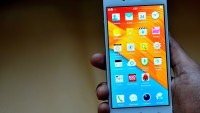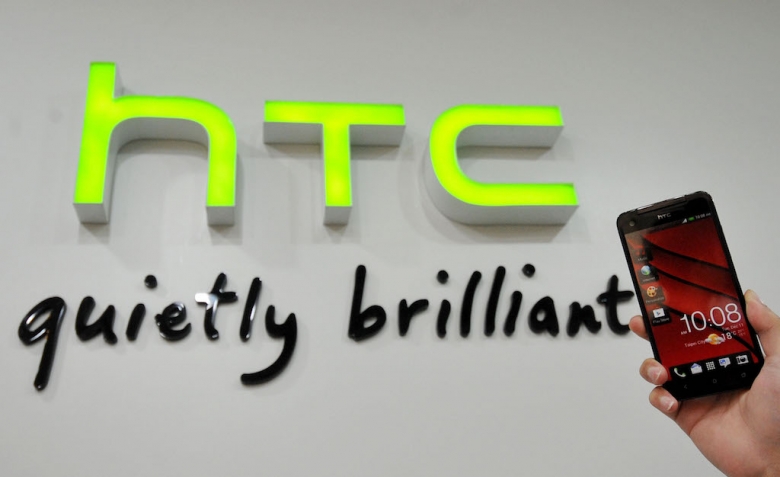New Tech Makes Selfies Look Like Professionals Photos; Eliminates Ugly Distortions
| Arthur Dominic Villasanta | | Jul 29, 2016 05:20 AM EDT |
(Photo : Ohad Fried/Princeton University ) Better looking selfie. Princeton researchers invented a tool that corrects distortions in selfies, which often present a skewed sense of noses, foreheads and ears
The disadvantage of selfies is they produce distorted pictures of your face and sometimes make you look really ugly. And it's a fact selfies make noses larger, ears smaller and foreheads more sloping.
Researchers at Princeton University in New Jersey have unveiled a new method for making selfies look a lot more like the real you. The method can modify a person's face to look as though it were photographed by another person from farther away.
Like Us on Facebook
The project is the first of its kind to address the fixing of self-portrait distortions owing to camera distance.
Animated gifs showing original and modified images can be seen at http://www.princeton.edu/engineering/news/archive/?id=16974.
The editing tool can also alter someone's apparent pose, as if the camera were placed higher, lower or at an angle. When superimposed, images adjusted in this manner can be used to generate 3-D head shots.
Researchers said the technology might even make possible "live" photos that seem to move uncannily, like portraits hanging in the Hogwarts School from the Harry Potter movies.
"Although it is the age of the selfie, many people are unaware of how much these self-portraits do not really look like the person being photographed because the camera is way too close," said Ohad Fried, lead developer of the new method and a Ph.D. candidate in the Department of Computer Science at Princeton University.
"Now that people can edit so many aspects of a photo right on their phones, we wanted to provide a quick way to edit faces that maintains realism."
Adam Finkelstein, senior author of the paper and a professor of computer science said people have evolved to be very sensitive to subtle cues in other people's faces, so any artifacts or glitches in synthesized imagery tend to really jump out.
"With this new method, we therefore had to make sure the photo modifications looked extremely realistic, and we were frankly surprised at the fidelity of the results we were able to obtain starting from just a single photo."
In developing the method, Fried and his colleagues began with a model for generating digital, 3-D human heads. The model came from FaceWarehouse, a database of 150 people photographed in 20 different poses.
The next ingredient, a program made available by researchers at Carnegie Mellon University, identified nearly six dozen reference points across someone's face, such as the corners of the eyes, top of the head, chin when presented with a selfie.
The Princeton photo-editing method then adjusts the 3-D head model so it optimally corresponds to the points detected on the face. In other words, the eyes in the 3-D model subsequently corresponded to where the subject's eyes, for instance, were in the selfie.
"Now we had an underlying 3-D model of the 2-D selfie image," said Fried.
Modifying the selfie then proved straightforward. The selfie's coordinates for facial reference points needed to be updated to match those in the 3-D image of a face, photographed either in a different pose or by a more distant camera. The 2-D image underwent a warp to approximate a desired change in its virtual 3-D orientation, and all within just a handful of seconds.
"I believe the reason the synthetic image looks so good is that it has exactly the same pixel colors as in the original photo -- it's just that they have been moved around a little bit to provide the illusion that the camera had been in a different location," said Finkelstein.
Other applications besides correcting the distance perspective and poses of selfies include creating 3-D anaglyphs, Harry Potter-style "live" portraits and editing frames of video.
Ira Kemelmacher-Shlizerman, an assistant professor of computer science at the University of Washington who was not involved in the research, said adjusting apparent camera distances could also let people forego the awkward selfie sticks when trying to capture snazzier self-portraits.
"The selfies application is very fun, which could bring an end to the selfie stick!" said Kemelmacher-Shlizerman.
Before potentially pursuing commercial development or release, Fried and colleagues want to first focus on honing their photo-editing tool.
"We still have a lot of research to do," said Fried. "We are happy with what we achieved so far, but we look forward to learning how we can make these selfie transformations appear even more realistic."
Fried, who is supported by a Google Graduate Fellowship, is presenting a paper described the latest progress in the photo editing software technique last July 28 at the SIGGRAPH 2016 conference in Anaheim, California held by the Association for Computing Machinery (ACM). The paper will also appear in the journal ACM Transactions on Graphics.
The other collaborators on this project are Eli Shechtman of Adobe Research and Dan Goldman, now with Google but with Adobe Research during the bulk of the research. Princeton undergraduates Brian McSwiggen and John Morone, both computer science majors, have built an online demonstration of the new portrait manipulation method at the project's web page, where additional information and a video may also be found: http://faces.cs.princeton.edu/.
TagsSelfie, Princeton University, self-portrait distortions, Ohad Fried
©2015 Chinatopix All rights reserved. Do not reproduce without permission
EDITOR'S PICKS
-

Did the Trump administration just announce plans for a trade war with ‘hostile’ China and Russia?
-

US Senate passes Taiwan travel bill slammed by China
-

As Yan Sihong’s family grieves, here are other Chinese students who went missing abroad. Some have never been found
-

Beijing blasts Western critics who ‘smear China’ with the term sharp power
-

China Envoy Seeks to Defuse Tensions With U.S. as a Trade War Brews
-

Singapore's Deputy PM Provides Bitcoin Vote of Confidence Amid China's Blanket Bans
-

China warns investors over risks in overseas virtual currency trading
-

Chinese government most trustworthy: survey
-

Kashima Antlers On Course For Back-To-Back Titles
MOST POPULAR
LATEST NEWS
Zhou Yongkang: China's Former Security Chief Sentenced to Life in Prison

China's former Chief of the Ministry of Public Security, Zhou Yongkang, has been given a life sentence after he was found guilty of abusing his office, bribery and deliberately ... Full Article
TRENDING STORY

China Pork Prices Expected to Stabilize As The Supplies Recover

Elephone P9000 Smartphone is now on Sale on Amazon India

There's a Big Chance Cliffhangers Won't Still Be Resolved When Grey's Anatomy Season 13 Returns

Supreme Court Ruled on Samsung vs Apple Dispute for Patent Infringement

Microsoft Surface Pro 5 Rumors and Release Date: What is the Latest?













